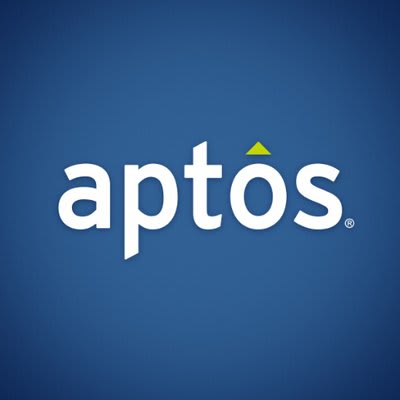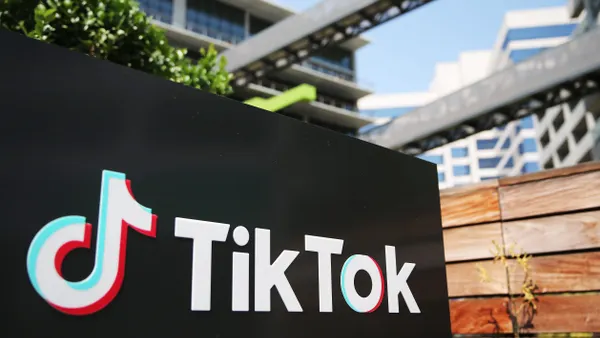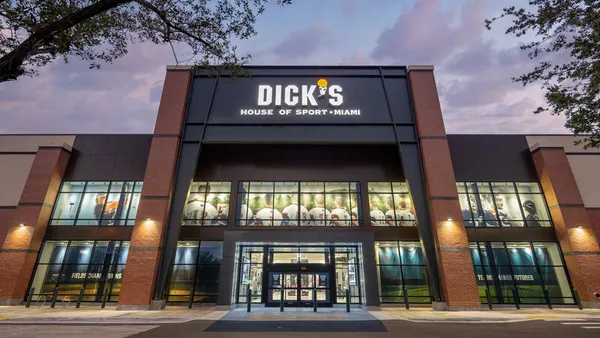For kids, Halloween means free candy. For teenagers in Mean Girls, it's the only day of the year girls can't say anything about the questionable clothing choices of their classmates. But for businesses like Party City, it's millions of dollars of opportunity.
Last year, the company made over $65 million from its temporary Halloween City and Toy City stores, according to a filing with the SEC. And it's growing: The retailer's sales were $10.8 million higher than the year prior, "driven by Halloween City sales per store increasing 14.1% versus the month of fiscal October 2017."
Of course, that also means Halloween poses a significant risk to seasonally-driven retailers like Party City and Spirit Halloween. The costume- and candy-driven holiday features prominently in Party City's list of potential risks, primarily because it's where the company makes a "significant portion" of its revenue.
So while adults might think their decisions — from choosing to hand out candy rather than cart children from house to house, to dressing up the dog like a mail carrier or a taco or, occasionally, joining in on the fun — are trivial, at least one group of niche retailers is sweating over them.
Halloween by the numbers
The National Retail Federation's (NRF) annual survey on Halloween, conducted in partnership with Prosper Insights & Analytics, has pinned this year's Halloween spending at $8.8 billion, the third-highest in the study's 14-year history. That equates to roughly $86.27 per person, on average.
According to Phil Rist, executive vice president of strategy at Prosper Insights & Analytics, the difference in spend per person is only a matter of cents — it's the number of people participating this year that has dropped slightly. But the holiday remains just as strong as the past few years, and much stronger than when they first started conducting the survey in 2005.
Back then, the average number of respondents participating in Halloween was around 55%, Rist said, and this year, it's at 68%.
"In the past 10 years, it's been the growth of people participating as adults, and then even people without children in the household dressing up or dressing up their pets, that has broadened the market to participate in Halloween activities," Rist said of the growth of the holiday.
Those shoppers are spending on everything from candy to greeting cards. According to the NRF's study, 95% of shoppers are planning to buy candy (for an estimated total of $2.6 billion), followed by 72% buying decorations ($2.7 billion), 67% purchasing costumes (which has the highest estimated spend at $3.2 billion) and 34% getting greeting cards ($390 million).
Halloween may not gather the same amount of attention from retailers as the larger holiday season does, but it's in the top five most important holidays for the industry, Bill Lewis, a director in the retail practice at AlixPartners, said. He places it behind Christmas, Thanksgiving, back to school and Valentine's Day (although NRF places it 9th of the top 10 events in terms of consumer spend).
"The pure-play Halloween retailers like say a Party City or Spirit Halloween may start planning store locations literally Nov. 1, and it's an all-year-round type of thinking for the right real estate and for products," Lewis said, though that number is probably closer to nine months for retailers less focused on Halloween. "But Halloween is one of those holidays that there's pretty much year round activity associated with it."
Still, Halloween is not your typical spending holiday, and it's important that retailers grasp the differences in what drives consumer behavior around Halloween, Rist says.
"Christmas and Hanukkah are driven by love for family and friends, and Valentine's Day is also driven by love or that special someone. Then you get into Mother's Day and Father's Day, and those are driven by guilt, maybe, but most likely honor and respect," Rist said. "Back to school — it's all need-driven … But what's the reason for Halloween spending? It's just about fun."
That's a different kind of purchase behavior and necessitates a different approach, but the element of fun also means that discovery platforms like social media are particularly important during Halloween, and customers are going online more and more for inspiration.
Online search was the top source for inspiration (with 35% of consumers going there), according to the survey, followed by in-store browsing (28%), family and friends (20%), Pinterest (18%), YouTube (14%) and Instagram (14%).
All three of those social media platforms have increased as inspiration hubs since 2015, and Rist says part of the reason is that people are talking about what they should be for Halloween when they're with family or friends, so the smartphone is a go-to place for both inspiration and purchasing.
"'Rational' purchase decisions that may come into play in back to school and back to college go out the window," Rist said, "because it's about dressing up, it's about decorating, it's about handing out candy to kids, and it's those emotional drivers that make the Halloween spending season special or different from other retail spending seasons."
Witch retailers need a Halloween win?
When it comes to who Halloween impacts, there's an obvious list of retailers — grocery stores, mass merchants, specialty Halloween stores — and a less obvious list, which includes crafts retailers, pet stores and, to a smaller extent, department stores.
The interest in pets is a newer — and growing — phenomenon, according to Rist. The report with NRF noted that 29 million people are planning to dress their pets in costumes this year, and Lewis agreed that sector should look for upside from not just Halloween, but the whole holiday season.
"The pet business and dressing your pets up is increasingly bigger," Lewis said. "I mean, you're seeing it not just at Halloween, but also at Christmas. Most of the pet stores have that and even some of the websites are already kind of pushing the pet Halloween costume. So I think you'll continue to see the growth in pet costumes."
Craft retailers also stand to benefit, but their participation in Halloween hasn't altered much over the years. Prosper Insights & Analytics started tracking the involvement of craft retailers in 2014, when about 13% of respondents planned to go to crafts retailers for their Halloween shopping. Since then, it's gone up and down slightly, but has hovered around 12% to 13%.
Sectors that get a bigger lift from Halloween are discount stores (42%), which includes mass merchants like Walmart and Target, as well as dollar stores; Halloween specialty stores (36%), grocery stores (25%), online (25%) and department stores (23%).
While each of those sectors has a stake in what kind of sales Halloween delivers, performance during that holiday has no bearing on what the rest of the season will bring — or how consumers will behave over the upcoming shopping days.
"Neither is back to school, by the way," Rist said. "There's a lot of Wall Street analysts that say that back to school is, like, the bellwether for whether the holiday season comes … Back to school is about need-driven purchases, and Christmas and Hanukkah are about love. And they're not related."
Still, performing well during the season doesn't hurt, especially for department stores, which have enough problems to deal with on their own. According to Lewis, the most important thing to those retailers is to capture the impulse Halloween shopper, which means candy and a tightly focused selection of decor or other inventory. The full selection likely won't be at every department store location, but rather an assortment where they expect it to perform well.
For dollar stores, it's a "basket builder," Lewis says, and since they're some of the most frequently shopped locations for Halloween, in addition to mass merchants, they'll have candy, cheap costume accessories and other items.
But, as most would guess, it's specialty Halloween stores that have the most to lose if the holiday has a disappointing year.
"For those two stores, Spirit Halloween and Party City, pop-ups are a big part of their strategy," Lewis said, "and so they're constantly looking at that. Party City also a couple years ago bought and secured their own private label business to make costumes. So they're just invested deeply in the success of Halloween, because in many ways, Halloween is their Christmas."
The spookiest risks
Unfortunately for those in the business of tricks and treats, Halloween is on a Thursday this year. There are a number of reasons that's not ideal, but for retailers, the most pronounced is that it's about as far away from the weekend as is possible — and that's usually a big shopping time for procrastinators who haven't thought about Halloween much.
Lewis noted that when Halloween is close to the weekend — a Sunday or a Monday, for example — that's "typically better" for retailers, because they can plan any necessary sales to get rid of excess inventory just before the holiday hits. But when Halloween falls later in the week, it can be harder to plan for the number of shoppers a given store will receive at the last minute.
The threat of tariffs also floated its spectral form over retailers planning for Halloween, as well as consumers, 14% of whom said concerns about the economy would impact their plans. However, Halloween products should have been long-purchased by the time tariffs hit, and "practically all" of the Christmas seasonal products should have been in as well, Lewis said, making tariffs "a 2020 issue, if at all."
That's a win for seasonal retailers — Party City noted in a recent SEC filing that poor sales at Halloween could have a number of negative impacts on its business.
"Any unanticipated decrease in demand for our products during the Halloween season could require us to maintain excess inventory or sell excess inventory at substantial markdowns, which could have a material adverse effect on our business, profitability, ability to repay any indebtedness and our brand image," the company wrote, noting that an economic downturn, bad weather or not being able to find adequate leases could all pose problems.
"The fact is: There's more than 2,000 vacancies when you go across B-malls, C-malls and strip centers."

Bill Lewis
Director in the Retail Practice at AlixPartners
Demand, at the least, shouldn't be a problem, Rist said.
"The candy you can probably buy anywhere, but the specific costumes, those types of places — their biggest threat is people might start with an Amazon first," he said.
One of the other biggest threats for specialty players is finding leases, but Lewis notes that there are plenty of openings to be found in the bones of dead retailers. Even more enticing for landlords is the fact that many of the leases serve double duty, going from Halloween specialty stores to toy stores during the rest of the season.
"Between the two larger players, there's about 1,600 leases that are taken as pop-ups at this time of year and then you sprinkle in some other smaller players, I'd say in total, it's close to 2,000 pop-up stores, maybe even a little bit more, that happen across the country," Lewis said. "The fact is: There's more than 2,000 vacancies when you go across B-malls, C-malls and strip centers. So it's a good use of space at this time of year where the retail demand is there for it."
It might mean taking over abandoned Babies R Us stores, but it gives Halloween stores what they need and it brings in cash for landlords dealing with high vacancy rates and unprecedented numbers of closures.














